NADIS Sheep Health Bulletin – High involuntary culling rates in adult sheep
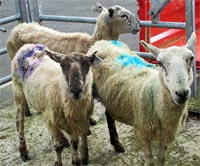
By Phil Scott DVM&S, DipECBHM, CertCHP, DSHP, FRCVS
Economic importance
High culling rates of young ewes before the end of the productive lives (involuntary culls) are a major financial loss to farmers. The cost differential between a replacement gimmer and ewe culled after only one to two crops of lambs could be as high as £50-£60 especially if the latter sheep is in an emaciated state.
Can the number of sheep culled before the end of their productive lives be reduced in your flock thereby increasing your income?
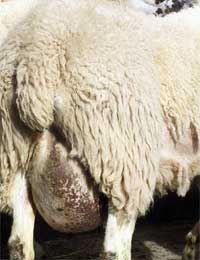 |
|---|
| Chronic mastitis is identified by a hard swollen udder two to three months after weaning |
Cause
Voluntary culls are those sheep which are sold at the end of their productive lives in the flock, typically after four to six crops of lambs depending upon breed and management policy. Involuntary culls are those sheep sold before the end of their productive lives in the flock for reasons such as poor condition/weight loss, prior vaginal prolapse, chronic mastitis, and chronic lameness. Ideally, the target should be for no involuntary culls but this can rarely be achieved in most flocks.
There are several important causes of weight loss in adult sheep necessitating thorough investigation in order to prevent/control them.
Clinical signs
Farm records will identify those sheep that have had a vaginal prolapse necessitating culling. Unlike vaginal prolapse, uterine prolapse rarely occurs in the same sheep during a subsequent pregnancy and these need not be culled. Chronic mastitis will be identified by handling the udder of all sheep immediately prior to the breeding season. The normal udder will have completely involuted by two to three months after weaning chronic mastitis is identified by a hard swollen udder which may contain several softer golf ball-sized abscesses which may discharge pus. Lame sheep that have not responded to treatment must be culled noting that such sheep will rarely be fit for transport to market or slaughterhouse.
Determining the reason(s) for poor condition in the proportion of the flock culled prematurely necessitates thorough veterinary examination. There are numerous reasons for weight loss in individual adult sheep which your vet will investigate including:
- Poor dentition including broken mouth and molar (cheek) teeth problems
- Chronic diseases such as pneumonia and sheep pulmonary adenomatosis
- Johne’s disease (paratuberculosis)
- Various tumour conditions
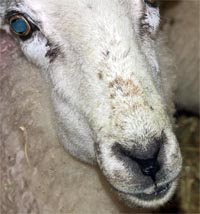 |
|---|
| Pouching of food material and displacement of molar teeth affecting this ewe’s right cheek. |
Poor nutrition, parasitic gastroenteritis and fasciolosis (liver fluke), and sheep scab typically present as a whole group/herd problem.
Welfare implications
Debility is a major welfare concern.
Diagnosis
Parasitic gastroenteritis and chronic fasciolosis are diagnosed by demonstration of eggs in faecal samples. Broken mouth or undershot/overshot jaw is readily identified by examination of the incisor dentition. Abnormal molar dentition can be much more difficult to recognise and quidding is not always present. A mouth gag and pen torch are often necessary to fully examine the cheek teeth.
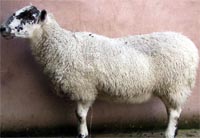 |
|---|
Chronic diseases such as sheep pulmonary adenomatosis require careful veterinary examination. |
Unlike cattle, sheep affected with Johne’s disease rarely have watery diarrhoea. Note the emaciated condition and poor fleece. Blood and/or faecal samples, in conjunction with postmortem examination, are important to establish diagnosis.
Management/Prevention/Control measures
Parasitic gastroenteritis and chronic fasciolosis are controlled by strategic management policies developed in conjunction with the farmer’s own veterinary surgeon who has local knowledge of the disease risks.
There are no specific prevention measures for broken mouth but such sheep often lead productive lives when there is abundant grazing and adequate supplementary feeding during periods of high metabolic demand such as late gestation and early lactation. There is no treatment for molar dentition problems.
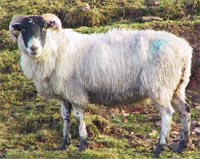 |
|---|
Johne’s disease (paratuberculosis) is common in sheep in some areas of the UK and may cause premature culling/death of up to 5% of all adult sheep. |
Chronic pneumonia caused by bacteria may respond to a course of antibiotics prescribed by a veterinary surgeon.
The prevalence of sheep pulmonary adenomatosis can be reduced by a number of management practices which should be discussed wit your veterinary surgeon
Johne’s disease (paratuberculosis) can be greatly reduced by vaccination but this and should be fully discussed with the farmer’s veterinary surgeon.
Copyright © NADIS 2008 www.nadis.org.uk
